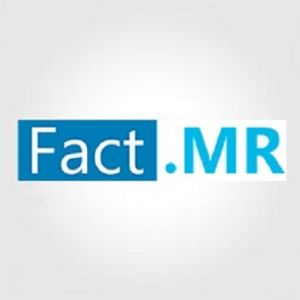Glyoxal Market :Growing Demand to Impact Revenue Share during 2018-2027Posted by Nimit Kumar on March 7th, 2019 In order to study the various trends and patterns prevailing in the concerned market, FactMR has included a new report titled “Glyoxal Market :Growing Demand to Impact Revenue Share during 2018-2027” to its wide online database including upcoming trends and growth factors. This research assessment offers a clear insight about the influential factors that are expected to transform the global market in the near future. The report studies the “Glyoxal Market” worldwide, especially in North America, Europe, Southeast Asia, India and Other Regions with production, size, growth, revenue, consumption, import and export in these regions. The intelligent report also anticipates that the market would grow at a constructive CAGR until 2027. Multinationals Continue to Consolidate Their Position, Holding Over 80% Share BASF SE is the front runner in the glyoxal market, with around 80 thousand metric tons of glyoxal annual output and over 30% of the glyoxal market revenues. The company is a prominent provider of glyoxal in the enhanced oil recovery application as well as in the gas industry. DowDuPont and Zhonglan Industry Co. Ltd are close competitors of BASF trying to broaden their consumer base and introduce novel blends with traditional excellence in chemical manufacturing to stand out in the market. Hubei Hongyuan Pharmaceutical Technology Co., Ltd. and Mitsubishi Chemical Corporation are other important competitors and with DowDuPont and Zhonglan Industry, the four companies collectively hold over 52% of the glyoxal market revenue share. Other leading players in the glyoxal market are Huntsman Corporation, Amzole India Pvt. Ltd. and Celanese Corporation who are also important contenders in the glyoxal marketplace. Glyoxal Gains Momentum as a Potential Aldehyde Substitute Glyoxal’s use as a formaldehyde substitute in wood adhesive applications is known for a long time. A number of studies are underway to use glyoxal as an aldehyde substitute. Especially studies are in pipeline to develop glyoxal as a formalin or formaldehyde substitute. Formaldehyde finds extensive application in the production of industrial resins and is an important precursor to multiple chemicals and other materials. However, harmful effects of formaldehyde on human health are well studied and according to the US National Toxicology Program, formaldehyde is classified as a human carcinogen. Glyoxal Demand to Increase as Chemical Industry Emphasizes on Sustainability Major investments in the chemical industry are aimed at developing chemical intermediates with higher biodegradability. Glyoxal is one of the important chemical intermediates used across niche industry verticals for its higher biodegradability. With the ongoing emphasis on sustainability across end-user industries, manufacturers in the glyoxal marketplace are actively engaged in introducing glyoxal compounds with higher sustainability grades. Glyoxal provided by BASF SE is readily biodegradable and according to OECD 301C-E & 303A guideline, shows 90% decrease of dissolved organic carbon. Owing to its higher biodegradability, glyoxal is also accredited for its safe use in the food packaging industry. According to the research carried out at Max Planck Institute of Colloids and Interfaces, lignin which is used as a promising materials in sustainable energy storage devices are studied to achieve enhanced charging and electrode stability with the crosslinking of glyoxal. Glyoxal Demand as a Crosslinking Agent Continues to Grow Owing to its low moisture retention characteristics, application of glyoxal as a crosslinking agent is highly popular across end-use industries such as textiles, paper & pulp, oil & gas, leather, cosmetics and wood hardening. End-use industries continue to leverage benefits of glyoxal and consistent research and development activities ensure a promising future of the glyoxal marketplace with a number of innovative solutions already in the pipeline. To deliver application-specific solutions, manufacturers closely work with the industry to align with the specific requirements. As a crosslinking agent, glyoxal provides comprehensive solutions for a huge number of chemical applications and hence is expected to witness significant demand for glyoxal in the coming years. Like it? Share it!More by this author |


